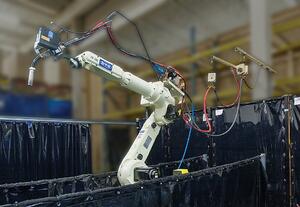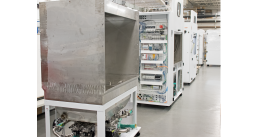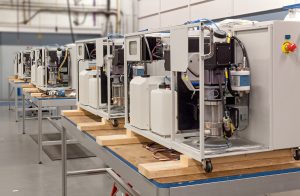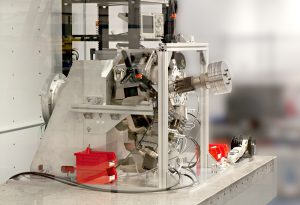We keep hearing that the Internet of Things, or IoT is coming. In many cases, it’s already here. Your watch knows how many steps you’ve taken, your phone knows where you are, your fridge knows if you have any limes in the fridge. It won’t be too long before your blender sends you a text that your spouse is making margaritas, so please pick up some lime juice on your way home from work.
 But what does that have to do with manufacturing? This strange world of manufacturing has two faces. One that is pushing the bounds of the latest technologies to gain an extra percentage of efficiency, the other is the old guard that’s “always done it this way” and is resistant to new changes.
But what does that have to do with manufacturing? This strange world of manufacturing has two faces. One that is pushing the bounds of the latest technologies to gain an extra percentage of efficiency, the other is the old guard that’s “always done it this way” and is resistant to new changes.
Peter Zelinksi, of Modern Machine Shop magazine, has a fun article (as usual), called “Understanding the Internet of Things” that explores some interesting IoT applications used by some industry peers. The article goes on to explain how IoT is used in some preventative maintenance, to reduce costs, and even keep an eye out for potential misuse of machinery. Most of the technology already exists, but the budding software and hardware necessary for connectivity and interpretation are today’s challenges.
“Dr. Kurfess says, “I asked some of my students if there was a way to create a system that could detect if the saw was cutting metal. They smiled and said, ‘Yes, and we can even identify what kind of metal it is cutting.’”
The article and subjects are absolutely fascinating, but of course I can’t help thinking of both the good and the bad implications of IoT in manufacturing. The good portions seem fairly obvious. Real time manufacturing management, predictive maintenance, efficiency gains, automation, labor reduction, stronger customer relationships, and the list goes on. Of course, the critical side of me says, how could this go bad? Each manufacturing company inherently has some proprietary systems in place. Do you really want customers demanding that they can log into your manufacturing IoT system to see how your costs are structured? Is there a possibility for a cyber-attack that foreign entities can view critical manufacturing data and even customer information? What happens in a system crash or a bad line of code?
Of course, time will tell. There will be good and bad. Using common sense and risk averse practices will be one way to mitigate problems but also reap the benefits of IoT in manufacturing. The fact is, one the technology gets rolling, you don’t want to get steamrolled and left in the dust, so you may not have a choice.








